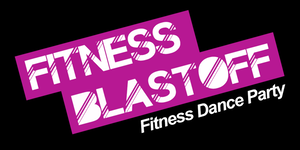Is the constant exposure to negative news affecting our wellbeing?
In this week’s blog our guest blogger, Stacey Mensah, who is a freelance journalists, asks the question: ‘Is the constant exposure to negative news affecting our wellbeing?’
I’ve always wondered how my profession affects my health. Is the constant exposure to news, be it good, or bad, affecting me? How often do you watch the news? I’m guessing you watch it in one of five ways. One – you watch it before the school run, trying to become as informed as possible before you hit those school gates; Two – You listen or watch the hourly updates; Three – You find yourself consuming as much information as possible throughout the day; Four – You hope the talk around the lunch table will fill you in on all of the latest details. Or, possibly, you don’t watch the news.
Due to my profession I have to consume a lot of news. And according to some people, because of this, I should be under a desk somewhere, pulling my hair out and shivering in a nocturnal state. Ok, I must admit that’s a bit of an exaggeration on my part but there is truth to this and of course I have a study on hand to back this up. The lovely psychologists over at the University of Sussex found that the less negative news participants heard, the better off their health was. Those that were exposed to the negativity spent more time talking about their worries and persistently thinking about them. It also proved to exacerbate their own personal worries. With every day worries climbing upon the mountain that is life, it’s all too easy to drown yourself in ‘negative news’.
As an individual who has a keen interest in politics I beg to differ with this point of view. I accept that it’s plausible, but I still disagree. Being able to tune out of ‘negative news’ is a luxury. It’s not Western however, as the catastrophic events of the last few months will go to show. The idea of being able to ‘pick n mix’ what we can tune into is an interesting one, as we’re selectively choosing which bits of news – or as I like to call it, someone else’s reality – we can tune into. And of course, yes, it is sad. Seeing events that mark the end of someone’s life or that of a society’s way of life, is hard. Let’s accept that. But choosing to completely stop is simply doing yourself a disservice. Watching the news allows you to discover new things in the world and it also challenges the way you think.
If you’ve been reading this blog for a while you will know that one of the main things we look to promote is moderation. That glass of wine is not going to hurt you, it’s only once we push towards the barrel do we start to feel it. The same should be said for the news. I mean you don’t want to be that person in the grocery aisle that doesn’t know who our prime minister is! Everyone is different and watching the news 24/7 works only for the few. Instead of ‘watching the news’ and all of the connotations that comes with it lets aim to just be aware. Aware of what’s going on around us and if we have the power to change it.
As always we welcome your opinions. Comment down below.
See you next week.
























